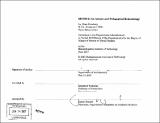| dc.contributor.advisor | Krzysztof Wodiczko. | en_US |
| dc.contributor.author | Ginsburg, Hope | en_US |
| dc.contributor.other | Massachusetts Institute of Technology. Dept. of Architecture. | en_US |
| dc.date.accessioned | 2007-10-22T17:35:38Z | |
| dc.date.available | 2007-10-22T17:35:38Z | |
| dc.date.copyright | 2007 | en_US |
| dc.date.issued | 2007 | en_US |
| dc.identifier.uri | http://hdl.handle.net/1721.1/39322 | |
| dc.description | Thesis (S.M.)--Massachusetts Institute of Technology, Dept. of Architecture, 2007. | en_US |
| dc.description | Includes bibliographical references (p. 70-71). | en_US |
| dc.description.abstract | This thesis introduces SPONGE, a project developed at the Massachusetts Institute of Technology between October 2006 and May 2007. SPONGE is a workshop model based on immersion, absorption and making connections. The project is both an artistic practice and a method for teaching and learning. My intent in the writing that follows is to give the reader a complete sense of SPONGE. I will begin with a narrative description of the first SPONGE. Once the concept of SPONGE is clear, I will put the project in an art historical context by providing a synopsis of site-specific art and social practice. The current debate about the role of aesthetics in socially based artwork underlies my discussion of the role of the visual and the sensory in SPONGE. Talking about aesthetics also invites an exploration of the autonomy of artistic praxis. I will argue that by creating a distancing framework, SPONGE avoids the dissolution of art into life, even as it celebrates content that exists outside of a traditional art context. A space is thereby preserved for criticality. With criticality comes the politics of the SPONGE, which will be considered in terms of pedagogy. I will address the role of the participant and the way in which SPONGE encourages independent thought and the assembly of ideas. | en_US |
| dc.description.abstract | (cont.) Once SPONGE has been evaluated through the lens of aesthetics, criticality, and pedagogy, I will put forth some thoughts on the future of SPONGE. I believe the workshop has the potential to be adapted for use in almost any context and I propose that any field of inquiry may find its place in SPONGE. I have included excerpts in this text from an earlier paper entitled "The Artist as Employee." It is from that paper, and my desire to find a formal structure for my artwork, that SPONGE emerged. I will conclude this thesis with what I feel is an appropriate endpoint for a project that will continue to evolve: a section on the origins of SPONGE. | en_US |
| dc.description.statementofresponsibility | by Hope Ginsburg. | en_US |
| dc.format.extent | 71 p. | en_US |
| dc.language.iso | eng | en_US |
| dc.publisher | Massachusetts Institute of Technology | en_US |
| dc.rights | M.I.T. theses are protected by copyright. They may be viewed from this source for any purpose, but reproduction or distribution in any format is prohibited without written permission. See provided URL for inquiries about permission. | en_US |
| dc.rights.uri | http://dspace.mit.edu/handle/1721.1/7582 | |
| dc.subject | Architecture. | en_US |
| dc.title | SPONGE : an artistic and pedagogical methodology | en_US |
| dc.title.alternative | Artistic and pedagogical methodology | en_US |
| dc.type | Thesis | en_US |
| dc.description.degree | S.M. | en_US |
| dc.contributor.department | Massachusetts Institute of Technology. Department of Architecture | |
| dc.identifier.oclc | 173319021 | en_US |
